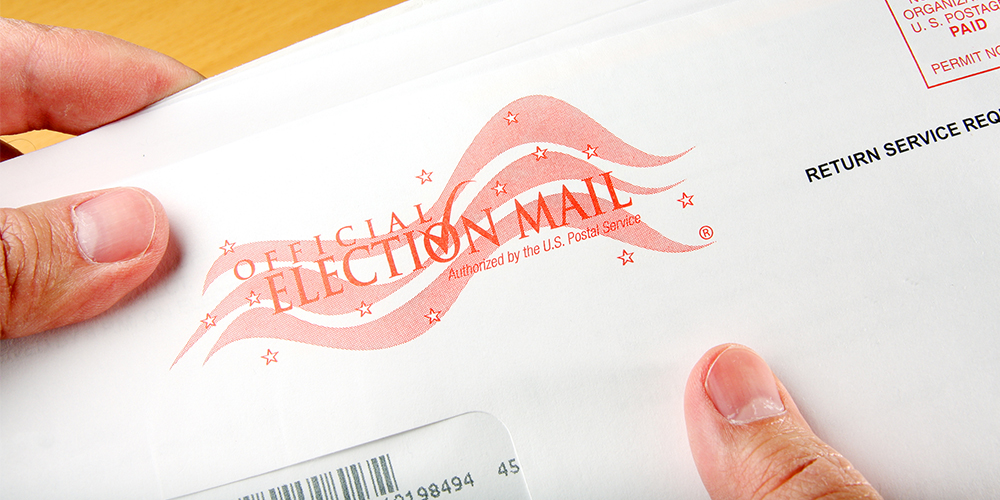Direct Mail During an Election Year: Q&A with SeQuel’s Director of Strategy, Patrick Carroll

In 2024, Americans have a presidential election, where all 435 seats in the U.S. House of Representatives and 33 seats in the U.S. Senate are up for grabs. As a marketer, you’re likely wondering how the influx of political direct mail during an election year will affect your fall campaign delivery and performance.
The home voting system continues to progress. The 2020 election witnessed a significant rise in the number of Americans who voted via mail-in ballots, primarily driven by the Coronavirus pandemic. While the prevalence of mail voting is expected to be lower this year with in-person voting reaching pre-pandemic numbers, it will remain a desirable voting system across the United States.
Candidates are also expected to launch their “spray and pray” mail campaigns across U.S. households. We chatted with Patrick Carroll, our Director of Strategy, to discuss DTC direct mail strategies during an election year and how to get the most out of your fall campaign.
How does marketing channel efficiency compare during an election year?
Carroll: Ultimately, many channels will be impacted by the elections this year, just as they have in the past. Prime examples are linear TV and CTV|OTT, where we tend to see a domino effect. The oversaturation of political campaigns leads to an influx of advertisements that, in turn, triggers increased competition and a noticeable surge in advertising costs.
On the other hand, I would expect channels like direct mail and multichannel digital marketing to emerge as beacons of opportunity as they offer more targeted and personalized approaches. Specifically, direct mail rates do not change due to demand, protecting your advertising budget and acquisition strategy. Consumers may find positive marketing mail as a welcome distraction from heavy political messages, providing an opportunity for marketers to connect with audiences and strengthen brand relationships.
Historically, the end of the election season triggers a rebound in consumerism and engagement simply because any uncertainties over the outcomes have passed. It is also when consumers shift their focus from the election to the fast-approach holiday season – a season that boosts direct marketing engagement and conversions as consumers are actively looking for deals and special offers from their favorite brands.
Direct mail marketers can look at historical direct mail performance trends in the fall of a non-election year to understand baseline seasonality in your business, then compare that to this year’s performance once your results are in. If your brand is launching into the direct mail channel, there won’t be any historical mail data to access, so look to your more established channels (such as paid search or social) to establish the impact. Compare the index of this fall’s campaigns to what you’d typically expect, and you have a good barometer of the effect of elections on your campaigns. For most brands, the impact is expected, which helps quantify it.
What about mail delivery?
Carroll: We have been actively tracking USPS delivery and developments for our campaigns, and ultimately, we are not experiencing material delivery delays for marketing mail during this election year. The USPS has a robust process for handling and delivering election mail, and we anticipate only a slight push out of 2-3 days on average – which for most third-class marketing mailers is rather immaterial.
Political analysts predict the 2024 elections will set ad spending records. Do you have any advice for fall mailers?
Carroll: Ad saturation starts about 60 days before the election. If you are planning to mail during this peak, here are a few things to try:
- For most digital advertising channels, demand drives cost, which can increase CPMs and impact performance efficiency. Consider how you can use channels that are just as effective and have steady costs, such as direct mail, to connect with your audience and stay on budget.
- Maintain a brand presence on the channels that have always proven successful for your brand. If you intend to integrate your direct mail and digital channels, use cohesive messaging and visuals to connect your campaign and naturally lead your customers through the buying journey.
- Your audience may find alternate marketing mail a welcome distraction from the political blather. Make sure your piece separates itself with an engaging creative strategy. Avoid busy formats and red, white, and blue color palettes so your message is not confused with a political advertisement.
- Use the election season for a retargeting campaign. Tap into your CRM data to target consumers already familiar with your brand for a cross-sell, up-sell, or re-sell message.
- If it aligns with your strategy, adjust your in-home window to fall just after the election when consumers are shifting their focus to the future.
We are here to help. To learn more about direct mail during an election year or to discuss your fall direct mail strategy, give us a call.

